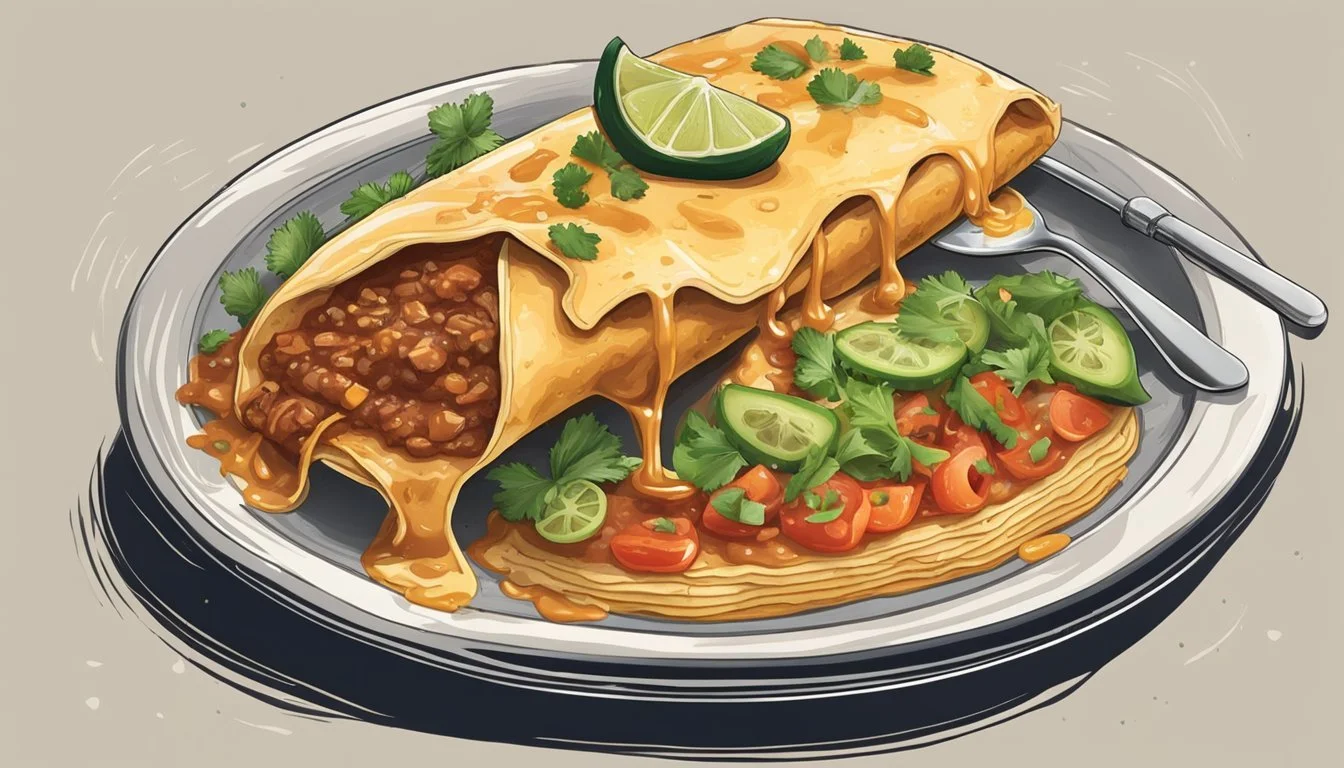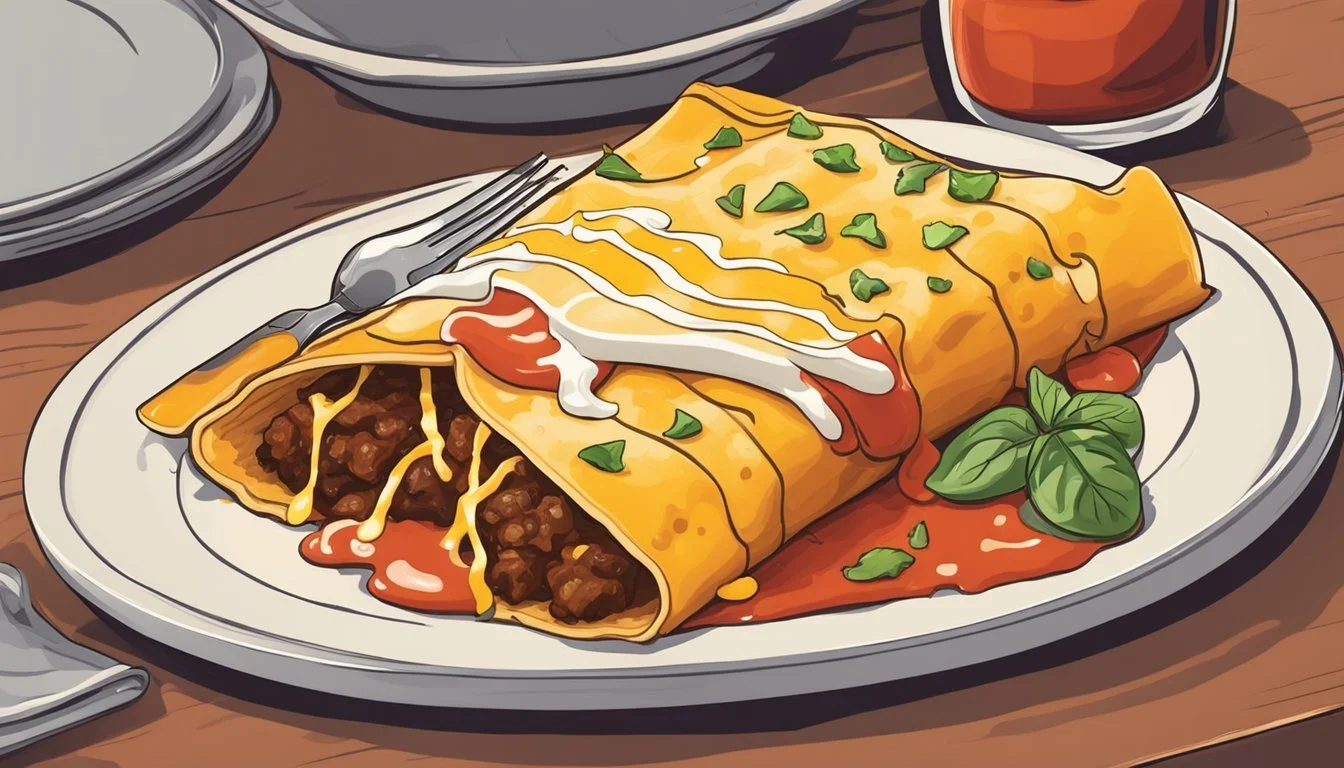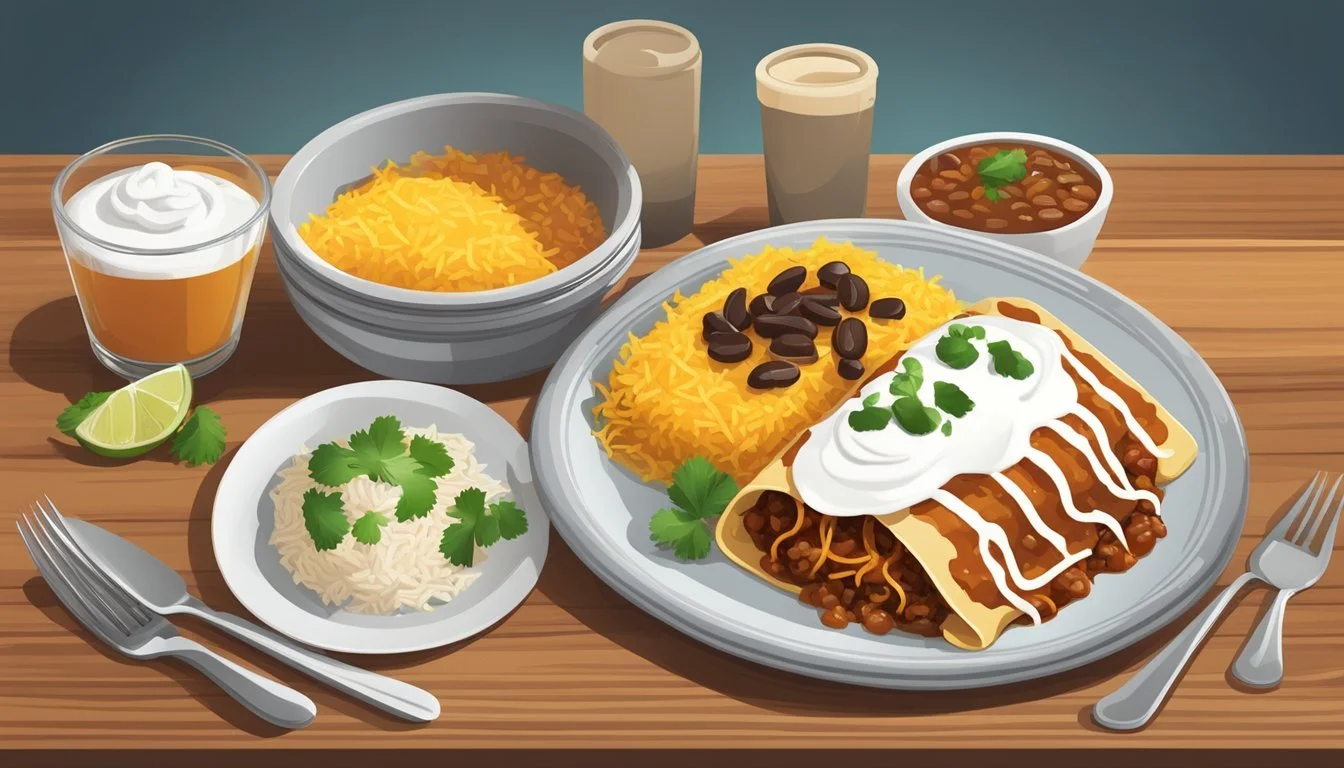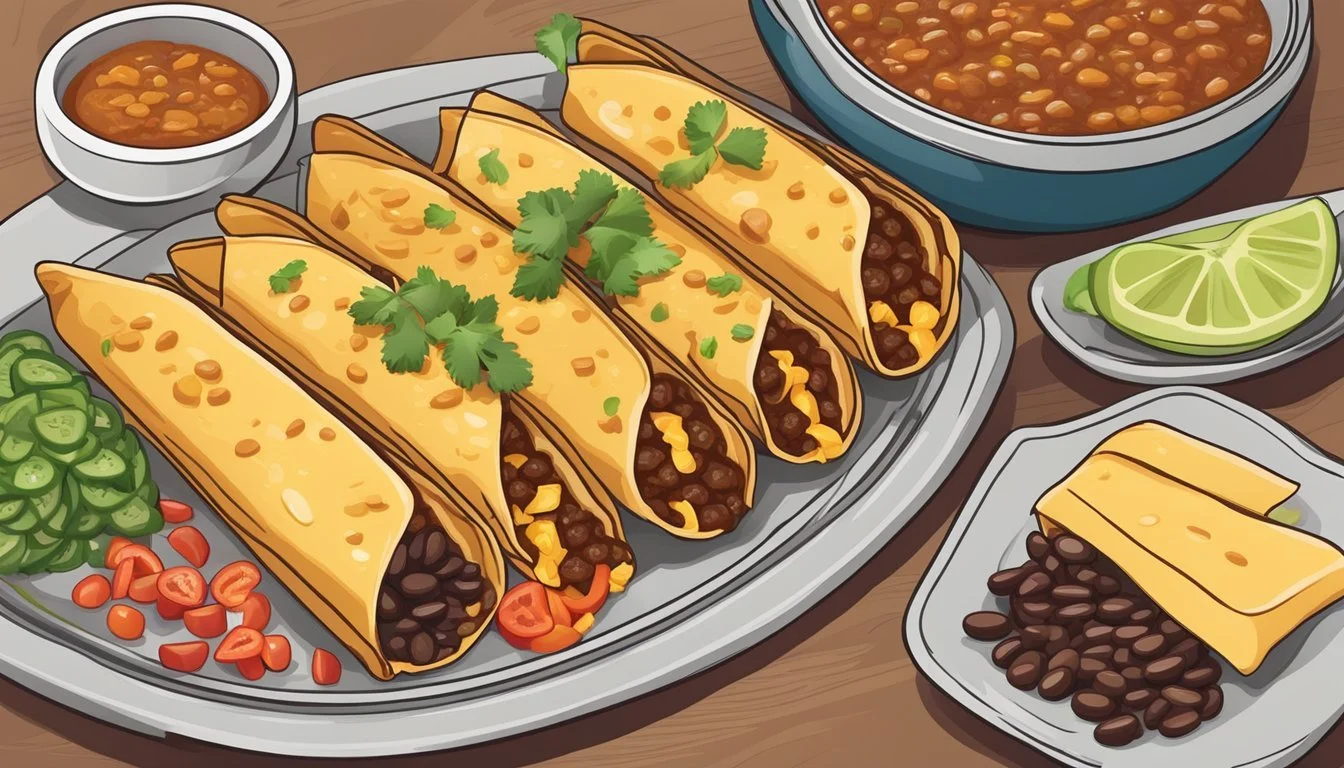How do you eat an enchilada?
Mastering the Art of Enjoying This Classic Dish
Eating an enchilada is a vibrant experience that seamlessly blends taste, tradition, and technique. As a quintessential Mexican dish with variations in Tex-Mex cuisine, enchiladas cater to a wide variety of palates. They consist of corn tortillas rolled around a filling, typically of meats, cheese, beans, or combinations thereof, and are liberally draped in a chili sauce that imbues them with their characteristic flavor.
The act of savoring an enchilada goes beyond mere consumption; it involves an appreciation for the layers of flavor and texture. Enchiladas are typically served hot, with the sauce and melted cheese creating an inviting presentation that is both aromatic and visually stimulating. Accompaniments often include a dollop of sour cream, a sprinkle of fresh cheese, diced onions, and chopped cilantro (how long does cilantro last?), enhancing the taste experience.
For many, eating an enchilada is not merely about the basic mechanics but about embracing the culture embedded within every bite. As each region in Mexico and areas within the Tex-Mex culinary sphere might have its own distinctive take on the enchilada, they offer a variety of flavors and textures. One may find variations in fillings, sauces, and toppings, allowing each individual to choose their preferred combination and thus personalize the enchilada to their taste.
Understanding Enchiladas
Enchiladas are a complex and versatile dish, with variations in their preparation and serving that reflect a rich culinary tradition. The history, types, and methods they encompass are essential to appreciate their place in Mexican cuisine and global food culture.
History and Origin
The enchilada has deep roots in Mexican history, tracing back to the time before the Spanish conquest, when indigenous peoples would roll tortillas around other foods as a convenient way to eat. These early versions, known by the Nahuatl word chillapizzali, evolved into the enchiladas known today. Typically, corn tortillas are used, signifying their authenticity in Mexican culinary practices.
Types of Enchiladas
The main types of enchiladas are differentiated by their fillings and sauces, forming an array of flavors and textures:
Cheese Enchiladas: Filled with a variety of cheeses, often topped with a red or green chili sauce.
Beef Enchiladas (What wine goes well with beef enchiladas?): Incorporate ground or shredded beef, providing a hearty meal that pairs well with bold sauces.
Chicken Enchiladas: (What wine goes well with chicken enchiladas?) Usually shredded chicken is used, offering a lighter option that absorbs the flavors of the chosen sauce.
While corn tortillas are the traditional choice for making authentic enchiladas, flour tortillas can be used and are preferred in some variations. They tend to provide a softer texture and less pronounced flavor, acting as a blank canvas for the fillings and sauce.
Ingredients and Preparations
Before creating the perfect enchilada, it's essential to gather the right ingredients and prepare them carefully. This process involves selecting the appropriate tortillas, choosing a savory filling, making a flavorful sauce, and adding the final touches with additional toppings.
Selecting Tortillas
Tortillas are the foundation of any enchilada, and choosing the right type makes a significant difference. Corn tortillas are traditional and lend a distinct taste and texture; they're also high in fiber. For a softer texture, flour tortillas can be used, but they offer a different flavor profile. Whichever type one chooses, the tortillas should be fresh and pliable.
Corn Tortillas:
Higher in fiber
Ideal for gluten-free options
Flour Tortillas:
Softer texture
Suitable for those who prefer a milder taste
Choosing the Filling
The filling often includes a protein like chicken or beans, both of which contribute flavor and fiber. Some may opt for cheese or vegetables such as onions, tomatoes, and peppers. The key is to season the filling well with salt, garlic, and other spices for maximum flavor.
Protein Options
Chicken: Shredded or diced, seasoned well
Beans: Packed with fiber, adds heartiness
Vegetables:
Onions and peppers: Sautéed until soft
Tomatoes: Fresh or as part of the sauce
Making the Sauce
Enchilada sauce is a critical component that can be red or green, based on tomatoes or tomatillos, respectively. The sauce should be rich, flavorful, and mixed with spices like cumin, garlic, and chili peppers. A homemade sauce will enhance the dish but quality store-bought varieties are sufficient in a pinch.
Enchilada Sauce Components:
Base: Tomato for red sauce, tomatillos for green
Spices: Cumin, chili powders, garlic, salt
Additional Toppings
After baking, enchiladas are often garnished with fresh toppings such as cilantro, extra cheese, diced onions, and sometimes a dollop of sour cream or guacamole. These toppings add freshness, additional layers of flavor, and texture contrast to the dish.
Fresh Toppings:
Cilantro: Bright, fresh flavor
Onions: Adds crunch and sharpness
Cheese: Melty, rich finish
When layered together, these elements create enchiladas that are a symphony of flavors and textures, with each component playing its unique part in the dish.
Assembling Enchiladas
Assembling enchiladas involves a step-by-step process of preparing the tortillas, adding the appropriate fillings, rolling them carefully, and finally, baking to perfection.
Layering Basics
The foundation of an enchilada is the tortilla. One should opt for corn tortillas for their authentic flavor and sturdiness, which hold up better under the sauce and fillings. Before layering, the tortillas should be warmed to make them pliable and prevent cracking during rolling. A common method is warming them in a microwave or on a hot griddle. The filling typically consists of a protein such as chicken, beef, or beans, and is seasoned to taste. For cheese enchiladas, shredded cheese such as Monterrey Jack or cheddar is used.
Enchilada sauce, either red or green, is a critical component. To assemble, one initially pours a thin layer of sauce into the bottom of a baking dish or casserole dish. A scoop of filling is placed in the center of a tortilla, followed by a sprinkle of cheese if desired.
Rolling Techniques
After placing the filling on the tortilla, the next step is to roll the enchilada tightly but without exerting too much force, which could rip the tortilla. Fold one edge of the tortilla over the filling, tucking it in securely, and continue rolling until completely closed. The enchilada should then be placed seam side down in the sauce-coated dish. It is important that the enchiladas are snugly arranged in the baking dish to keep them from unrolling during the baking process.
Baking Considerations
Once assembled and placed in a casserole dish, the enchiladas are liberally covered with more enchilada sauce, ensuring the sauce gets between the rolls. Additional shredded cheese can be sprinkled on top for a melty finish. The dish is then baked in a preheated oven at 350ºF until the cheese is bubbly and the edges of the tortillas begin to brown, typically about 25 minutes. Covering the dish with foil can prevent excess browning.
One may also assemble enchiladas as a make-ahead meal, storing them in the refrigerator before baking. Prior to baking, the oven should be preheated and the enchiladas allowed to reach room temperature to ensure even cooking.
It is also worth noting that one can enhance their enchilada experience with toppings like sour cream or homemade salsas added after the baking process.
Serving Enchiladas
When serving enchiladas, it is essential to consider both the choice of accompaniments that harmonize with the main dish and the presentation to ensure a visually appealing and appetizing meal.
Accompaniments
Rice: A common side is Mexican rice, which often contains ingredients like tomatoes and onions, offering a tangy flavor that complements the richness of the enchiladas. For a healthier twist, quinoa can be substituted, seasoned with fajita spices, corn, and black beans.
Salad: A refreshing salad, perhaps made with romaine lettuce, diced tomato, and chopped cilantro, adds a crisp contrast to the meal. Incorporating green chiles and tomatillos can inject a vibrant flavor into the salad.
Beans: Refried beans serve as a hearty side and can also be enjoyed as a dip.
Dips: Guacamole, made from ripe avocados, and sour cream are perfect for adding a creamy texture and cooling down the palate if the enchiladas are spicy.
Nutritional Information: Serving these sides not only balances the meal's flavors but also its nutritional profile, providing a good balance of protein, fiber, and vitamins.
Presentation Tips
Salsa: To elevate the visual appeal, a generous drizzle of salsa over the enchiladas adds a splash of color and hints at the spicy flavors to be discovered within.
Garnishes: A sprinkle of cilantro or a few slices of avocado on top can make a dish more visually appealing. The green accents of these garnishes provide a fresh look and a burst of flavor.
Layering: Thoughtfully layering the enchiladas on a plate, with all sides easily accessible, allows diners to tailor each bite to their personal taste preferences.
Serving: Plate the enchiladas hot, with sides arranged neatly for both aesthetic appeal and ease of eating, ensuring a warm and inviting presentation.
Storage and Reheating
Proper storage and reheating methods ensure that enchiladas retain their texture and flavor. By following these guidelines, one can enjoy enchiladas that are as close to freshly made as possible.
Freezing Enchiladas
To freeze enchiladas, it is advisable to wrap individual portions tightly in aluminum foil before placing them in an airtight container. This method prevents freezer burn and maintains the quality of the enchiladas for up to 3 months.
Refrigeration Best Practices
When refrigerating enchiladas, one should place them in an airtight container to preserve freshness. They should be consumed within 3-5 days. To prevent the enchiladas from becoming soggy, the dish should be covered with a baking dish or similar lid that seals well.
Reheating Procedures
Oven: Preheat oven to 350°F and transfer the enchiladas to a baking dish, optionally topping them with extra cheese and sauce. Cover with aluminum foil and heat for 20-25 minutes.
Microwave: For a quick option, place the enchiladas on a microwave-safe plate, cover with a splatter guard, and heat on high for about 2 minutes. Checking and stirring ensures even heating.
Skillet: Heat a small amount of oil over medium-high in a skillet. Cook 2-4 minutes until the bottoms crisp.
Air Fryer: Preheat to 350°F, place enchiladas in the basket, cover with foil, and heat for 5-7 minutes. Remove foil and continue for an additional 2-3 minutes to crisp.
Enchilada Variations
Enchiladas offer a versatile canvas for a multitude of fillings and sauces, catering to diverse tastes and dietary preferences. From traditional meat-stuffed rolls smothered in red sauce to inspired creations with an array of ingredients, enchiladas can be both a comfort food and a dish for experimentation.
Dietary Modifications
When considering dietary modifications in enchilada recipes, the fillings and sauces play a crucial role. For vegetarians, enchiladas can be packed with a variety of vegetables and black beans, providing both flavor and nutrition. Modern recipes may substitute traditional fillings with shredded chicken for a lighter option, or use a blend of cheesy ingredients that complement the spicy undertones.
Vegan Enchiladas:
Filling: Black beans, veggies, and jalapeños
Sauce: Homemade enchilada sauce made without animal products
Gluten-Free Options:
Tortilla: Corn tortillas rather than flour
Sauce: Ensure sauce is thickened with gluten-free alternatives
Regional Twists
Regional twists bring local flavors to enchilada recipes. The use of green chiles is typical of New Mexican enchiladas, often served stacked rather than rolled. Coastal variations include Seafood Enchiladas filled with shrimp in creamy sauces, occasionally topped with a vibrant green sauce or homemade salsa verde.
New Mexican-Style:
Key Ingredient: Green chiles
Serving Style: Stacked with a sunny-side-up egg on top
Coastal Varieties:
Protein: Shrimp or a blend of seafood
Sauce Preference: White or green sauces
In every region, enchiladas are a reflection of local tastes, incorporating spicy, saucy ingredients and often served with sides like authentic Mexican rice. Whether you crave a traditional dish or a contemporary twist, homemade enchiladas present a delicious opportunity to explore the rich tapestry of flavors and techniques that define this beloved dish.
Nutrition and Health Information
Enchiladas are a popular Mexican dish that can vary widely in their nutritional content depending on the ingredients used. Generally, one standard enchilada (163 grams) contains about 319.5 calories and 18.8g of fat. The caloric value predominantly comes from the filling, tortilla, and sauce.
Protein content is significant in enchiladas, especially if they are filled with meats like beef or chicken. For instance, enchiladas may contain approximately 12 grams of protein per serving, which contributes to muscle growth and repair.
A typical enchilada can also be high in sodium, which is something to be mindful of if one has specific dietary restrictions or health concerns. Healthy options may include the use of lean meats, low-fat cheeses, and whole-grain tortillas, which can help reduce overall calorie and fat content while maintaining the protein benefits.
Nutritional Information for a Typical Enchilada:
Calories: 319.5
Fat: 18.8g
Protein: 12g
Carbohydrates: Approximately 30g
Fiber: May vary (0g in some preparations)
It should be noted that enchiladas are typically low in fiber, unless made with whole-grain tortillas or additional vegetables. Including more vegetables can enhance the fiber content and overall nutritional value.
For those seeking healthier options, enchiladas can be modified by using ingredients like low-sodium enchilada sauce, reduced-fat cheese, or plant-based proteins to improve their profile without sacrificing flavor. Adding a generous portion of vegetables can also provide dietary fiber and essential nutrients, making the dish a more balanced meal.
Cooking Tips and Tricks
Mastering the art of enchilada making starts with an understanding of the balance between texture and flavor. Proper technique and ingredient selection can elevate the humble enchilada into a standout dish.
Improving Texture and Flavor
Tortillas: Opt for corn tortillas over flour to achieve the classic enchilada texture. They provide a sturdy base that holds up well to sauce while delivering an authentic flavor. Pre-frying tortillas lightly in oil can prevent them from becoming soggy when baked with sauce.
Cheese: Use a cheese that melts well, such as Monterey Jack, to get a gooey texture with a mild, buttery flavor. Adding cheese both inside and on top of the enchiladas ensures each bite is rich and satisfying.
Sauce: A robust enchilada sauce is key to the dish's flavor profile. Enhancing store-bought sauce with spices, such as dried oregano, or mixing in a bit of homemade tomato salsa can add depth to the taste.
Beans: Including a layer of refried beans inside the enchiladas not only adds protein but also improves the overall mouthfeel, making for a more substantial meal.
Quick Homemade Alternatives
Enchilada Sauce: For a quick homemade enchilada sauce, combine crushed tomatoes with green chiles, a splash of water, and seasonings like oregano. Simmer the mixture to marry the flavors and thicken it to the desired consistency.
Hot Sauce: If enchilada sauce is unavailable, one can create a simple alternative with tomato paste, a bit of vinegar, water, and hot sauce to taste. Adjust the ratio to achieve either a milder or spicier sauce based on preference.
Selecting the right components and applying these tips will result in enchiladas that boast an ideal balance between their rich, savory filling and the slightly crisp, flavorful exterior.
Conclusion
When it comes to savoring enchiladas, diners are presented with a harmonious blend of flavors encased in soft tortillas. To achieve the optimal dining experience, one should utilize both fork and knife, while ensuring each cut ushers in a balance of filling and sauce. The consumption method not only ensures efficiency but prioritizes neatness, allowing for the enjoyment of enchiladas to its fullest extent without the looming risk of a messy meal.
It's important to recognize that enchiladas come in a diverse range, often filled with a variety of ingredients such as different meats, cheeses, and vegetables. Among them, beef is a popular choice, whether in the form of shredded, ground, or chunk pieces suitable for hearty dishes. They are traditionally adorned with an array of salsas, adding both color and depth to each bite.
Baking is the final and crucial step in the preparation. A generous drizzle of enchilada sauce alongside a topping of grated cheese, baked to perfection, results in a delectable meal that is both warm and inviting. The pinnacle of this dish is achieved when the cheese has reached an ideal state of meltiness, complementing the robust flavors within.
To conclude the enchilada experience, one may garnish the dish with a dollop of sour cream, guacamole, chopped tomatoes, and lettuce, enhancing both taste and texture. Whether the opportunity arises to enjoy this classic dish at home or in a fine dining establishment, the way one eats an enchilada greatly enhances the culinary journey.
In essence, enchiladas offer a versatile and satisfying meal that is as enjoyable to eat as it is varied in its assembly. The process of consuming this storied dish is straightforward and can be executed with grace, leading to a memorable and delightful gastronomic affair.









